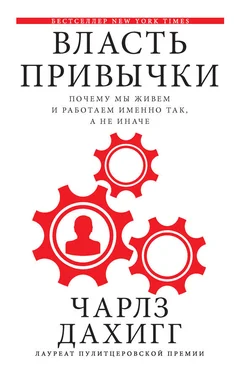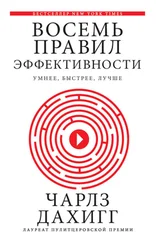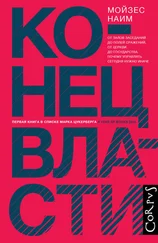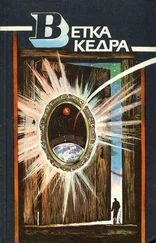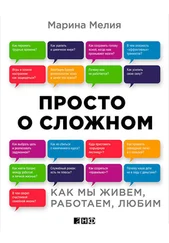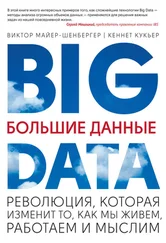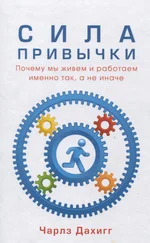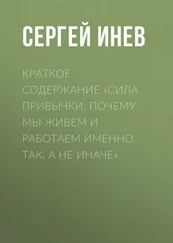Совещание аналитиков корпорации «Target», 18 октября 2005 г.
Информацией о бойкоте автобусных линий Монтгомери я обязан историкам, любезно согласившимся уделить мне время, в первую очередь Джону Кирку и Тейлору Бранчу. Многие сведения почерпнуты из следующих источников: John A. Kirk, Martin Luther King, Jr.: Profiles in Power (New York: Longman, 2004); Taylor Branch, Parting the Waters: America in the King Years, 1954–63 (New York: Simon and Schuster, 1988); Taylor Branch, Pillar of Fire: America in the King Years, 1963–65 (New York: Simon and Schuster, 1998); Taylor Branch, At Canaan’s Edge: America in the King Years, 1965–68 (New York: Simon and Schuster, 2006); Douglas Brinkley, Mine Eyes Have Seen the Glory: The Life of Rosa Parks (London: Weidenfeld and Nicolson, 2000); Martin Luther King, Jr., Stride Toward Freedom: The Montgomery Story (New York: Harper and Brothers, 1958); Clayborne Carson, ed., The Papers of Martin Luther King, Jr., vol. 1, Called to Serve (Berkeley: University of California, 1992), vol. 2, Rediscovering Precious Values (1994), vol. 3, Birth of a New Age (1997), vol. 4 , Symbol of the Movement (2000), vol. 5, Threshold of a New Decade (2005); Aldon D. Morris, The Origins of the Civil Rights Movement (New York: Free Press, 1986); James Forman , The Making of Black Revolutionaries (Seattle: University of Washington, 1997).
Henry Hampton & Steve Fayer, eds., Voices of Freedom: An Oral History of the Civil Rights Movement from the 1950s Through the 1980s (New York: Bantam Books, 1995); Rosa Parks, Rosa Parks: My Story (New York: Puffin, 1999).
John A. Kirk, Martin Luther King, Jr.: Profiles in Power (New York: Longman, 2004).
Подробнее о социологии общественных движений см.: G. Davis, D. McAdam, & W. Scott, Social Movements and Organizations (New York: Cambridge University, 2005); Robert Crain & Rita Mahard, “The Consequences of Controversy Accompanying Institutional Change: The Case of School Desegregation”, American Sociological Review 47, № 6 (1982): 697–708; Azza Salama Layton, “International Pressure and the U. S. Government’s Response to Little Rock”, Arkansas Historical Quarterly 56, № 3 (1997): 257–72; Brendan Nelligan, “The Albany Movement and the Limits of Nonviolent Protest in Albany, Georgia, 1961–1962”, Providence College Honors Thesis, 2009; Charles Tilly, Social Movements, 1768–2004 (London: Paradigm, 2004); Andrew Walder, “Political Sociology and Social Movements”, Annual Review of Sociology 35 (2009): 393–412; Paul Almeida, Waves of Protest: Popular Struggle in El Salvador, 1925–2005 (Minneapolis: University of Minnesota, 2008); Robert Benford, “An Insider’s Critique of the Social Movement Framing Perspective”, Sociological Inquiry 67, № 4 (1997): 409–30; Robert Benford & David Snow, “Framing Processes and Social Movements: An Overview and Assessment”, Annual Review of Sociology 26 (2000): 611–39; Michael Burawoy, Manufacturing Consent: Changes in the Labor Process Under Monopoly Capitalism (Chicago: University of Chicago, 1979); Carol Conell & Kim Voss, “Formal Organization and the Fate of Social Movements: Craft Association and Class Alliance in the Knights of Labor”, American Sociological Review 55, № 2 (1990): 255–69; James Davies, “Toward a Theory of Revolution”, American Sociological Review 27, № 1 (1962): 5–18; William Gamson, The Strategy of Social Protest (Homewood, Ill.: Dorsey, 1975); Robert Benford, “An Insider’s Critique of the Social Movement Framing Perspective”, Sociological Inquiry 67, № 4 (1997): 409–30; Jeff Goodwin, No Other Way Out: States and Revolutionary Movements, 1945–1991 (New York: Cambridge University, 2001); Jeff Goodwin & James Jasper, eds., Rethinking Social Movements: Structure, Meaning, and Emotion (Lanham, Md.: Rowman and Littlefield, 2003); Roger Gould, “Multiple Networks and Mobilization in the Paris Commune, 1871”, American Sociological Review 56, № 6 (1991): 716–29; Joseph Gusfield, “Social Structure and Moral Reform: A Study of the Woman’s Christian Temperance Union”, American Journal of Sociology 61, № 3 (1955): 221–31; Doug McAdam, Political Process and the Development of Black Insurgency, 1930–1970 (Chicago: University of Chicago, 1982); Doug McAdam, “Recruitment to High-Risk Activism: The Case of Freedom Summer”, American Journal of Sociology 92, № 1 (1986): 64–90; Doug McAdam, “The Biographical Consequences of Activism,” American Sociological Review 54, № 5 (1989): 744–60; Doug McAdam, “Conceptual Origins, Current Problems, Future Directions”, Comparative Perspectives on Social Movements: Political Opportunities, Mobilizing Structures, and Cultural Framings, ed. Doug McAdam, John McCarthy & Mayer Zald (New York: Cambridge University, 1996); Doug McAdam & Ronnelle Paulsen, “Specifying the Relationship Between Social Ties and Activism”, American Journal of Sociology 99, № 3 (1993): 640–67; D. McAdam, S. Tarrow, & C. Tilly, Dynamics of Contention (Cambridge: Cambridge University, 2001); Judith Stepan-Norris and Judith Zeitlin, “‘Who Gets the Bird?’ or, How the Communists Won Power and Trust in America’s Unions”, American Sociological Review 54, № 4 (1989): 503–23; Charles Tilly, From Mobilization to Revolution (Reading, Mass.: Addison-Wesley, 1978).
Phillip Hoose, Claudette Colvin: Twice Toward Justice (New York: Farrar, Straus and Giroux, 2009).
Там же.
Russell Freedman , Freedom Walkers: The Story of the Montgomery Bus Boycott (New York: Holiday House, 2009).
Martin Luther King, Jr., Stride Toward Freedom (New York: Harper and Brothers, 1958).
Taylor Branch, Parting the Waters: America in the King Years, 1954–63 (New York: Simon and Schuster, 1988).
Douglas Brinkley, Mine Eyes Have Seen the Glory: The Life of Rosa Parks (London: Weidenfeld and Nicolson, 2000).
John A. Kirk, Martin Luther King, Jr.: Profiles in Power (New York: Longman, 2004).
Carson, Papers of Martin Luther King, Jr.
Mark Granovetter, Getting a Job: A Study of Contacts and Careers (Chicago: University of Chicago, 1974).
Andreas Flache & Michael Macy, “The Weakness of Strong Ties: Collective Action Failure in a Highly Cohesive Group”, Journal of Mathematical Sociology 21 (1996): 3–28. Более подробно об этой теме см.: Robert Axelrod, The Evolution of Cooperation (New York: Basic Books, 1984); Robert Bush & Frederick Mosteller, Stochastic Models for Learning (New York: Wiley, 1984); I. Erev, Y. Bereby-Meyer & A. E. Roth, “The Effect of Adding a Constant to All Payoffs: Experimental Investigation and Implications for Reinforcement Learning Models”, Journal of Economic Behavior and Organization 39, № 1 (1999): 111–28; A. Flache & R. Hegselmann, “Rational vs. Adaptive Egoism in Support Networks: How Different Micro Foundations Shape Different Macro Hypotheses”, Game Theory, Experience, Rationality: Foundations of Social Sciences, Economics, and Ethics in Honor of John C. Harsanyi (Yearbook of the Institute Vienna Circle), ed. W. Leinfellner & E. Köhler (Boston: Kluwer, 1997), 261–75; A. Flache & R. Hegselmann, “Rationality vs. Learning in the Evolution of Solidarity Networks: A Theoretical Comparison”, Computational and Mathematical Organization Theory 5, № 2 (1999): 97–127; A. Flache & R. Hegselmann, “Dynamik Sozialer Dilemma-Situationen”, DFG-Project Dynamics of Social Dilemma Situations, University of Bayreuth, Department of Philosophie, 2000; A. Flache & Michael Macy, “Stochastic Collusion and the Power Law of Learning”, Journal of Conflict Resolution 46, № 5 (2002): 629–53; Michael Macy, “Learning to Cooperate: Stochastic and Tacit Collusion in Social Exchange”, American Journal of Sociology 97, № 3 (1991): 808–43; E. P. H. Zeggelink, “Evolving Friendship Networks: An Individual-Oriented Approach Implementing Similarity”, Social Networks 17 (1996): 83–110; Judith Blau, “When Weak Ties Are Structured”, Department of Sociology, State University of New York, Albany, 1980; Peter Blau, “Parameters of Social Structure”, American Sociological Review 39, № 5 (1974): 615–35; Scott Boorman, “A Combinatorial Optimization Model for Transmission of Job Information Through Contact Networks”, Bell Journal of Economics 6, № 1 (1975): 216–49; Ronald Breiger & Philippa Pattison, “The Joint Role Structure of Two Communities’ Elites”, Sociological Methods and Research 7, № 2 (1978): 213–26; Daryl Chubin, “The Conceptualization of Scientific Specialties”, Sociological Quarterly 17, № 4 (1976): 448–76; Harry Collins, “The TEA Set: Tacit Knowledge and Scientific Networks”, Science Studies 4, № 2 (1974): 165–86; Rose Coser, “The Complexity of Roles as Seedbed of Individual Autonomy”, The Idea of Social Structure: Essays in Honor of Robert Merton, ed. L. Coser (New York: Harcourt, 1975); John Delany, “Aspects of Donative Resource Allocation and the Efficiency of Social Networks: Simulation Models of Job Vacancy Information Transfers Through Personal Contacts”, Yale University, 1980; E. Ericksen & W. Yancey, “The Locus of Strong Ties”, Department of Sociology, Temple University, 1980.
Читать дальше
Конец ознакомительного отрывка
Купить книгу
